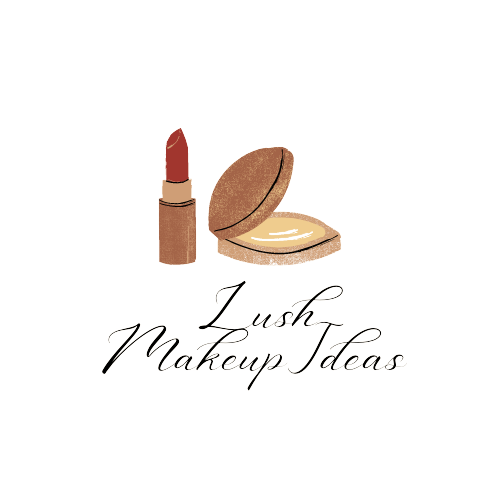In this article, you will discover the world of face paint tutorials on YouTube. You’ll learn how to create different designs and transform yourself into various characters using simple techniques and products. We will explore the most popular channels and resources where you can find step-by-step tutorials. Get ready to unleash your creativity and become a master face painter with the help of YouTube!
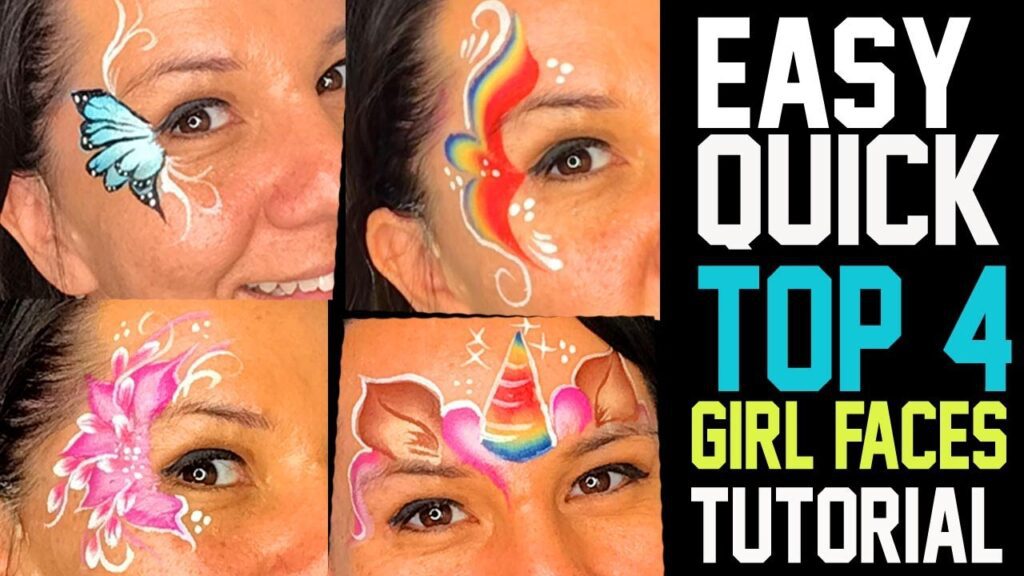
This image is property of i.ytimg.com.
Overview
What is face paint?
Face paint is a form of artistry that involves applying colorful pigments to the face to create various designs, patterns, and effects. From elaborate fantasy creatures to simple animal face paint, this creative medium allows individuals to transform themselves into different characters and express their unique style. Whether you’re preparing for Halloween, a theme party, or simply looking for a fun way to express yourself, face paint tutorials on YouTube can be a valuable resource for learning the techniques and skills necessary to create stunning designs.
Importance of face paint tutorials on YouTube
YouTube has become a go-to platform for individuals seeking creative inspiration and guidance. With the rise of social media influencers and content creators, YouTube has become a treasure trove of beauty and art tutorials, including face paint tutorials. These tutorials enable both beginners and experienced artists to develop their skills, learn new techniques, and explore their creativity.
By following face paint tutorials on YouTube, you have access to a wide range of instructional videos that break down the process step-by-step. You can easily pause, rewind, and rewatch the videos to ensure you fully grasp each technique. Additionally, many YouTube tutorials feature experienced face painters who share their tips, tricks, and insights, giving you invaluable guidance to support your own artistic journey.
Getting Started
Gathering necessary supplies
Before diving into face painting, it’s essential to gather the necessary supplies. Some basic items you’ll need include face paints, brushes, sponges, a mirror, and brush cleaner. Face paints come in different forms, such as water-based, cream-based, and oil-based. Each type has its own advantages and disadvantages, so it’s important to familiarize yourself with the various options to choose what works best for you.
In addition to paints, investing in a quality set of brushes is crucial for achieving precise and detailed designs. Different brush sizes and shapes are suited for specific techniques, so consider acquiring a variety of brushes to enhance your versatility as a face painter. Sponges are great for creating smooth base coats and blending colors seamlessly. Lastly, don’t forget a mirror to ensure you have a clear view of the design as you work, and brush cleaner to maintain your brushes and keep them in good condition.
Choosing the right face paint products
When it comes to selecting face paint products, it’s important to prioritize quality and safety. Look for face paints that are specifically formulated for use on the skin and adhere to safety standards. Avoid using craft paints or other non-skin-safe products, as they may contain harmful substances that can cause irritation or allergic reactions.
Water-based face paints are a popular choice among beginners and professionals alike due to their ease of use, vibrant colors, and easy washability. They are also less likely to cause skin irritations compared to oil-based or cream-based paints. However, if you desire a longer-lasting design or want to paint on latex or prosthetics, cream-based or oil-based face paints might be more suitable.
Before purchasing face paints, read reviews, check for any certifications indicating their safety, and consider investing in reputable brands that prioritize quality and customer satisfaction. Don’t hesitate to reach out to fellow face painters or consult online communities for recommendations on trustworthy brands and products.
Basic Techniques
Understanding color theory
To create visually appealing face paint designs, it’s important to have a basic understanding of color theory. Color theory explores how different colors interact with one another and how they can be combined effectively to create balance, contrast, and harmony in your designs.
Primary colors (red, yellow, and blue) are the foundation of all other colors. By mixing primary colors together, you can create secondary colors (purple, orange, and green). Additionally, mixing primary and secondary colors can lead to tertiary colors. Understanding the color wheel and how colors relate to each other will help you in choosing complementary colors, creating shading and highlighting effects, and achieving overall harmony in your face paint designs.
Prepping the skin for face paint
Properly prepping the skin before applying face paint is essential to ensure a smooth and long-lasting application. Start by cleansing the face with a gentle cleanser and moisturizing with a lightweight, non-greasy moisturizer. This helps to create a clean canvas and prevents the face paint from seeping into the pores.
If you’re planning to paint on someone with sensitive skin or a history of allergies, it’s advisable to perform a patch test. Apply a small amount of the face paint on a small area of the skin and monitor for any adverse reactions for 24 hours. This precautionary step can help prevent potential allergic reactions or skin irritations.
Applying a base coat
A base coat provides a foundation for your face paint design and helps the colors to appear vibrant and opaque. Using a damp sponge, apply a thin and even layer of face paint onto the entire face or the desired area. Work in gentle dabbing motions rather than rubbing to avoid streaks or uneven coverage.
Depending on the desired effect, you may choose to apply a base coat in a solid color or create a gradient by blending multiple colors. Experiment with different techniques and observe how different combinations of colors can transform the overall appearance of the design. The base coat sets the stage for the subsequent layers of detail and allows for easier application of additional colors.
Popular Designs
Creating animal face paint
Animal face paint designs are especially popular among children and adults alike. From tigers and lions to butterflies and cats, there are endless possibilities to unleash your creativity. By following YouTube tutorials, you can learn essential techniques such as contouring, blending, and adding texture to mimic the characteristics of different animals.
For example, to create a tiger face paint design, you can start by applying a base coat of orange face paint to the entire face. Use black face paint and a fine brush to create the distinctive stripes on the forehead, cheeks, and chin. Add white highlights to the stripes and use black face paint to outline the eyes and add a cat-like nose and whiskers. Finish the look by adding some shading to give the illusion of dimension and depth.
By learning the foundations of animal face paint designs through YouTube tutorials, you can adapt and modify the techniques to create your own unique animal-inspired designs.
Designing superhero masks
Superhero masks are another popular choice for face paint enthusiasts. From Batman and Spider-Man to Wonder Woman and Captain America, there are iconic superhero designs that can be recreated using face paint. YouTube tutorials provide step-by-step instructions on how to achieve the perfect superhero mask, complete with intricate details and shading.
To create a Spider-Man face paint design, start by outlining the mask shape using a fine brush and black face paint. Fill in the mask shape with red face paint, leaving spaces for the eye holes. Use white face paint to add highlights and create a web-like pattern across the mask. Finish by adding details such as the Spider-Man logo and shading to give the mask a three-dimensional appearance.
The possibilities for superhero face paint designs are endless, and by following YouTube tutorials, you can master the techniques necessary to bring your favorite superheroes to life.
Crafting fantasy creatures
For those who have a penchant for the fantastical, face paint tutorials on YouTube can guide you in creating mesmerizing fantasy creature designs. From fairies and unicorns to dragons and aliens, there are no limits to the imagination.
To create a mystical fairy face paint design, start with a base coat of a pastel color such as light blue or lavender. Use a fine brush and white face paint to add delicate swirls, stars, or flower designs on the forehead and cheeks. Add some shimmer or glitter for an extra touch of magic. To complete the look, incorporate additional elements such as gems or decorative accessories to enhance the overall fantasy vibe.
Through YouTube tutorials, you can learn the techniques required to create intricate details, incorporate fantasy elements, and bring your wildest imagination to life.
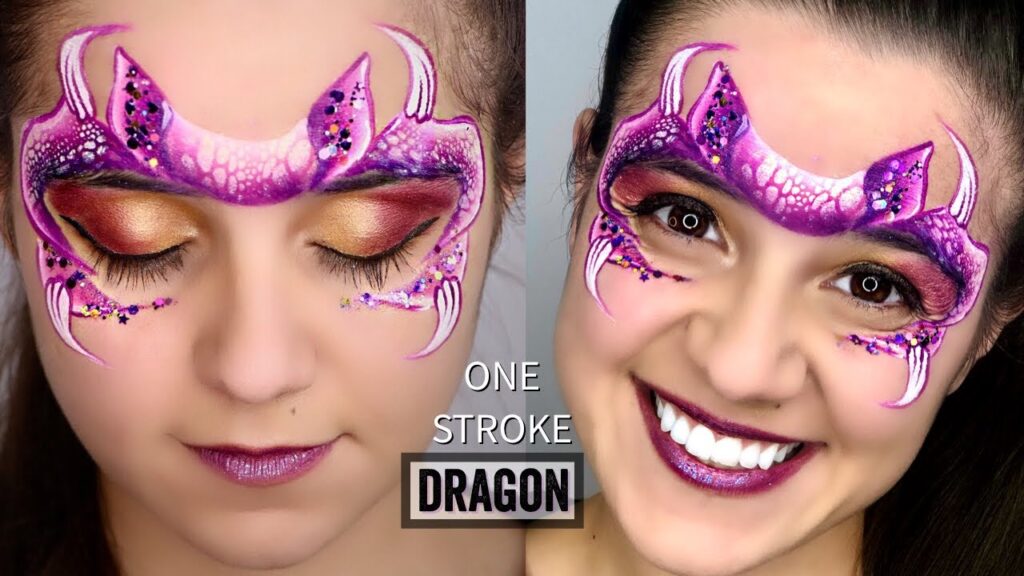
This image is property of i.ytimg.com.
Advanced Techniques
Adding depth with shading and highlighting
Shading and highlighting are essential techniques that add depth and dimension to your face paint designs. By using darker and lighter shades of the same color, you can create the illusion of contours, shadows, and highlights.
To achieve shading, choose a slightly darker shade of the base color and apply it strategically to the areas where shadows naturally occur, such as the hollows of the cheeks or the sides of the nose. Blend the darker color carefully, ensuring a smooth transition between the shades.
Highlighting involves using a lighter shade of the base color to add areas of brightness and create a three-dimensional effect. Apply the lighter shade to areas where light naturally hits, such as the bridge of the nose, the forehead, and the tops of the cheekbones. Blend the lighter color gently into the surrounding areas to create a seamless transition.
By mastering shading and highlighting techniques through YouTube tutorials, you can elevate your face paint designs and add a professional touch.
Blending multiple colors
Blending multiple colors is a technique that enables you to achieve smooth and seamless transitions between different shades and create captivating gradients.
To blend colors effectively, start by applying the lightest color first as a base. Then, using a clean brush or a sponge, gradually introduce the next shade by gently blending it into the lighter color. Repeat this process with additional colors, blending them together until you achieve the desired gradient or transition.
Blending multiple colors can be used to create various effects, such as creating realistic skin tones, depicting vibrant sunsets, or adding dimension to fantasy designs. YouTube tutorials provide demonstrations and guidance on color blending techniques, allowing you to explore the endless possibilities of color combinations.
Creating detailed patterns
Incorporating detailed patterns into your face paint designs adds a touch of intricacy and uniqueness. Whether you’re aiming to replicate a delicate lace pattern or an elaborate tribal design, YouTube tutorials can provide step-by-step instructions on how to achieve precise and detailed patterns.
To create detailed patterns, you’ll need a small brush with a fine tip and a steady hand. Start by outlining the pattern using black or another contrasting color. Then, fill in the details with various colors, ensuring clean and crisp lines. Take your time and practice patience as you work on intricate patterns, as precision is key to achieving a polished final result.
By following YouTube tutorials and practicing the techniques, you can build your confidence in creating captivating face paint designs that are sure to impress.
Special Effects
Simulating wounds and bruises
Simulating wounds and bruises is a popular special effects technique that can add a touch of realism to your face paint designs. Whether you’re aiming for a gory Halloween look or creating special effects for theater or film productions, YouTube tutorials can guide you in achieving realistic wounds and bruises.
To simulate wounds, you can use specialized products such as liquid latex, scar wax, and fake blood. Apply liquid latex to the desired area and use a sculpting tool to create texture and depth. Layer scar wax and blend it into the surrounding skin, shaping it to resemble cuts or scars. Finally, add fake blood for a gruesome finishing touch.
For bruises, start by applying a base coat of yellow or green face paint to the desired area. Use a sponge or brush to add lighter and darker shades of purple, blue, and brown to create a bruise-like appearance. Blend the colors together gradually to achieve a realistic bruising effect.
Special effects techniques require practice and patience, but with the guidance of YouTube tutorials, you can develop the skills necessary to create jaw-dropping special effects.
Creating 3D effects
Creating 3D effects in face paint designs can elevate your artistry to the next level. 3D effects give the illusion of depth and dimension, making your designs stand out and come to life.
One popular technique for creating 3D effects is called “shadowing.” By using a darker shade of the base color, you can paint shadows in strategic areas to make certain elements appear to protrude from the face. For example, if you were painting a butterfly, you could add shadowing around the wings to make them appear more lifelike and raised.
Another technique is “highlighting.” By using a lighter shade of the base color, you can accentuate certain elements and make them appear more prominent and illuminated.
Mastering 3D effects requires a keen eye for observation, meticulous technique, and precise shading and highlighting. YouTube tutorials provide guidance and demonstrations to help you develop these skills and incorporate stunning 3D effects into your face paint designs.
Using stencils for intricate designs
Stencils are a valuable tool for creating intricate designs with precision and consistency. Stencils allow you to achieve complex details without the need for freehand painting, making them especially useful for beginners or those seeking a quick and efficient way to create stunning designs.
When using stencils, first secure the stencil firmly against the skin, ensuring it is flat and in the desired position. Then, using a sponge or brush, apply the face paint colors over the stencil, being careful to avoid smudging or moving the stencil. Once the paint is applied, gently lift the stencil to reveal the intricate design.
Stencils come in various shapes and patterns, allowing you to explore different styles and expand your repertoire of designs. By following YouTube tutorials and practicing with stencils, you can create intricate designs with ease and precision.
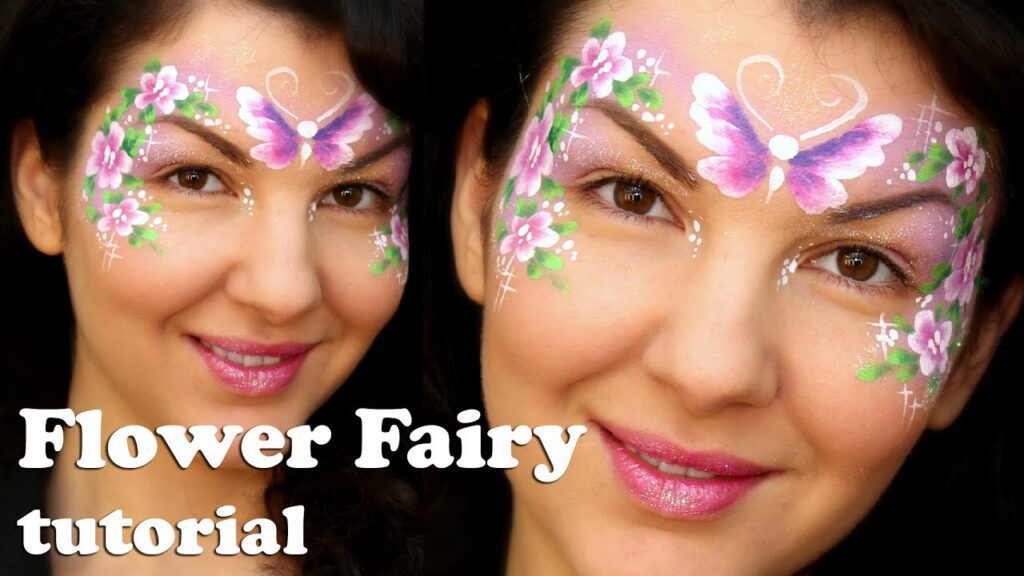
This image is property of i.ytimg.com.
Tools and Brushes
Different types of face paint brushes
Face paint brushes come in a variety of shapes, sizes, and materials, each serving specific purposes in the face painting process.
Flat brushes are suitable for covering larger areas and creating smooth and even base coats. They are versatile and can be used for both broad strokes and more detailed work, depending on the size of the brush.
Round brushes have a pointed tip, making them ideal for creating precise lines, swirls, and intricate details. They are commonly used for outlining designs, adding fine details, and creating highlights or shadows.
Filbert brushes are flat brushes with rounded edges. They are useful for blending colors, creating soft edges, and achieving more organic shapes. Filbert brushes are often used for painting petals, leaves, and fur textures.
Angled brushes have slanted bristles, allowing for greater control and precision. They are particularly useful for creating sharp lines, filling in small areas, and adding shading or contouring.
Detail brushes have very fine bristles and are used for intricate details, outlining, and precise work. They are essential for achieving delicate patterns and adding small accents to your designs.
Each type of brush serves a specific purpose, and having a variety of brushes at your disposal will enable you to explore different techniques and enhance your face paint designs. YouTube tutorials often provide recommendations for brush types and sizes based on the specific design being created.
Choosing the right tools for specific designs
The choice of tools and brushes for specific designs depends on the complexity of the design, the desired level of detail, and personal preference. While having a variety of brushes is important, it’s also essential to consider the size, shape, and density of the bristles, as these factors can greatly impact the outcome of your design.
For intricate and detailed designs, such as delicate patterns or fine linework, round brushes with fine tips or detail brushes are essential. These brushes allow for precise control, enabling you to create intricate details and achieve crisp lines.
When working on larger areas or creating a base coat, flat brushes and filbert brushes are more suitable. They can cover a larger surface area quickly and efficiently, allowing for a smooth and even application of paint.
Angled brushes are versatile tools that provide both precision and coverage. They are particularly useful for creating sharp edges, shading, and contouring, making them a valuable addition to your brush collection.
Ultimately, the tools and brushes you choose will depend on your individual style, preferences, and the specific requirements of the designs you’re creating. Experimentation and practice will help you discover which tools work best for you and assist you in achieving your desired results.
Safety and Hygiene
Practicing proper hygiene during face painting
Practicing proper hygiene during face painting is essential to ensure the safety and well-being of both the face painter and the individual being painted. Here are some hygiene practices to observe:
- Wash your hands thoroughly with soap and water before and after each face painting session to eliminate any potential bacteria or contaminants.
- Use clean brushes and sponges for each individual or clean them thoroughly between uses to prevent cross-contamination. If necessary, have multiple sets of brushes and sponges on hand.
- Avoid using saliva to moisten or clean brushes, as this can introduce bacteria or germs to the face paint and increase the risk of infections or allergic reactions.
- Place clean tissues or disposable wipes next to you to wipe off excess paint from brushes or sponges during the painting process, minimizing the risk of contaminating face paint containers or spreading germs.
- If face painting at events or parties, consider having hand sanitizers available for both yourself and the individuals being painted.
By adhering to proper hygiene practices, you can create a safe and enjoyable face painting experience for everyone involved.
Avoiding allergic reactions
Allergic reactions can occur when certain individuals come into contact with allergens present in face paint products. To minimize the risk of allergic reactions, follow these precautions:
- Always use face paints that are specifically formulated for use on the skin and adhere to safety standards. Avoid using craft paints or non-skin-safe products.
- Perform a patch test on a small area of the skin before face painting, especially if painting on someone with a history of allergies or sensitive skin. Monitor the area for 24 hours and observe any adverse reactions.
- Keep track of the ingredients used in face paints and be aware of any potential allergens or irritants that may be present.
- If someone shows signs of an allergic reaction, such as redness, swelling, itching, or a rash, remove the face paint immediately and advise them to seek medical attention if symptoms persist or worsen.
While allergic reactions are rare, it’s important to be vigilant and take necessary precautions to ensure the safety and well-being of yourself and those being painted.
Removing face paint safely
Removing face paint properly is essential to ensure the health and comfort of the individual having their face painted. Here are some tips for safe removal:
- Use mild, non-abrasive cleansers specifically formulated for removing face paint. Avoid using harsh chemicals or makeup removers that may irritate the skin.
- Gently massage the cleanser into the face paint, using circular motions to loosen the paint from the skin. Avoid rubbing too harshly or scrubbing vigorously, as this can cause skin irritation.
- Rinse the face with lukewarm water, ensuring that all traces of face paint and cleanser are removed.
- Pat the face dry with a clean towel or disposable paper towels. Avoid rubbing the skin, as this can cause unnecessary irritation.
- Apply a lightweight, non-greasy moisturizer to hydrate the skin after removing the face paint.
By following these steps, you can effectively remove face paint without causing unnecessary discomfort or irritation to the skin. Remember, each individual’s skin is unique, so it’s important to communicate with the person being painted and address any concerns they may have during the removal process.
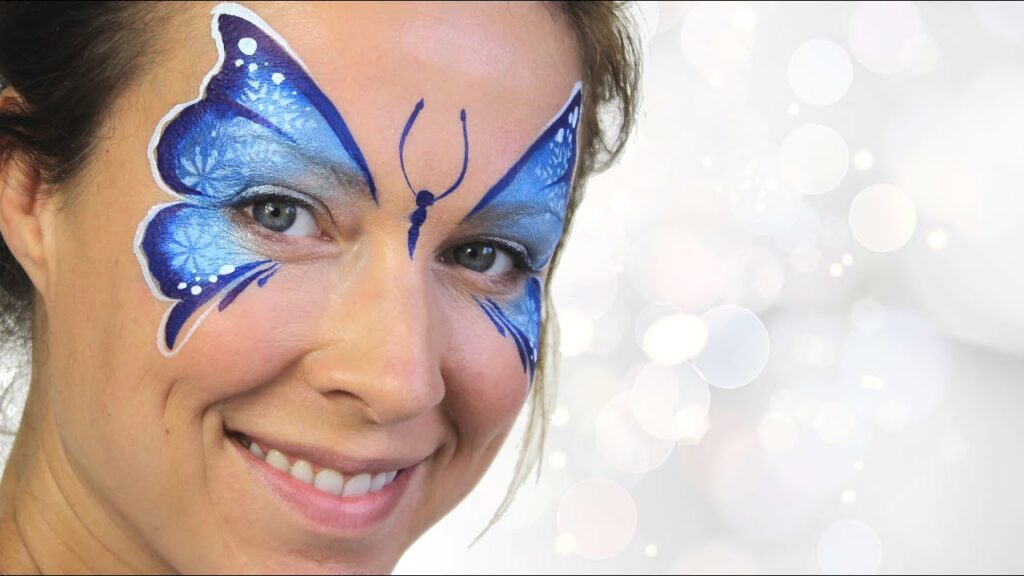
This image is property of i.ytimg.com.
Professional Tips
Building a face paint portfolio
Building a face paint portfolio is essential if you’re interested in pursuing face painting professionally or showcasing your skills to potential clients. Here are some tips to help you create a portfolio that highlights your talent and versatility:
- Document your face paint designs by taking clear and well-lit photographs. Ensure that the colors and details are accurately represented in the images.
- Include a variety of designs in your portfolio to showcase your range and expertise. Display both simple designs and more complex creations to demonstrate your adaptability.
- Organize your portfolio in a professional and aesthetically pleasing manner. Consider arranging the designs in a cohesive order or grouping them by theme.
- Clearly indicate your name, contact information, and any relevant experience or certifications. This will make it easier for potential clients or employers to reach out to you.
- Regularly update your portfolio with new designs and experiment with different techniques and styles. This shows your dedication to continuous learning and professional growth.
A well-curated and up-to-date portfolio can make a lasting impression and open doors to exciting opportunities in the face painting industry.
Managing time during face painting sessions
Time management is crucial during face painting sessions, especially when there are multiple individuals waiting to be painted. Here are some tips for efficient time management:
- Before starting the face painting session, communicate with the individual about their desired design and any specific requests or modifications they may have. This helps streamline the process and ensures that both parties are on the same page.
- Practice your designs beforehand to develop a sense of timing and efficiency. The more you practice, the quicker you will become at executing different designs.
- Consider offering a selection of pre-designed options for clients who may be indecisive or short on time. This allows them to choose a design quickly, reducing the decision-making process.
- Work systematically by starting with the base coat, followed by the main design elements, and ending with the finishing touches. Working in a logical order helps you stay organized and ensures a smooth flow throughout the painting process.
- Keep your workspace clean and well-organized. This way, you can easily find the colors and brushes you need, minimizing time spent searching for supplies.
- Maintain a friendly and engaging demeanor while painting, engaging in light conversation with the individual being painted. This creates a positive and enjoyable experience for both of you while ensuring that the painting process remains efficient.
By implementing these time-management techniques, you can maximize productivity during face painting sessions and cater to a larger customer base.
Working on diverse skin tones
Face painting is a form of expression that should be inclusive and adaptable to all individuals, regardless of their skin tone. Here are some tips for working on diverse skin tones:
- Familiarize yourself with a wide range of face paint colors that are suitable for different skin tones. This allows you to accurately match the individual’s natural skin tone and enhances the final result.
- Be mindful of cultural sensitivities and avoid appropriating or misrepresenting certain cultures through your designs. Research different cultural symbolism and meanings behind face paint to ensure you create designs that are respectful and appropriate.
- Practice shading and highlighting techniques to emphasize and flatter different facial features. By understanding how to enhance features such as cheekbones, jawlines, and eye shapes, you can create flattering and realistic designs for individuals of all ethnicities.
- Consider using metallic or iridescent colors, as they tend to complement a broad range of skin tones and create eye-catching effects.
By celebrating diversity and actively promoting inclusivity, you can create face paint designs that are uniquely suited to each individual and make them feel valued and represented.
Conclusion
Face paint tutorials on YouTube provide a wealth of knowledge and inspiration for individuals interested in exploring the art of face painting. Whether you’re a beginner or an experienced artist, YouTube tutorials offer step-by-step guidance, expert tips, and demonstrations to help you develop your skills, discover new techniques, and unleash your creativity.
From basic techniques such as color theory, prepping the skin, and applying a base coat to more advanced techniques like shading and highlighting, blending colors, and creating detailed patterns, YouTube tutorials cover a wide spectrum of skills necessary for mastering face painting.
Additionally, YouTube tutorials provide guidance on special effects techniques, tools and brushes, safety and hygiene practices, professional tips, and working on diverse skin tones. By following these tutorials and regularly practicing, you can build a strong foundation and hone your skills as a face painter.
Face painting is an exciting and rewarding form of artistic expression. By immersing yourself in the world of face paint tutorials on YouTube, you can unlock your creative potential, discover new possibilities, and continue learning and practicing to master this captivating art form. So grab your brushes, paints, and a touch of imagination, and let the face paint tutorials on YouTube guide you on an exhilarating journey through colors, techniques, and boundless creativity.
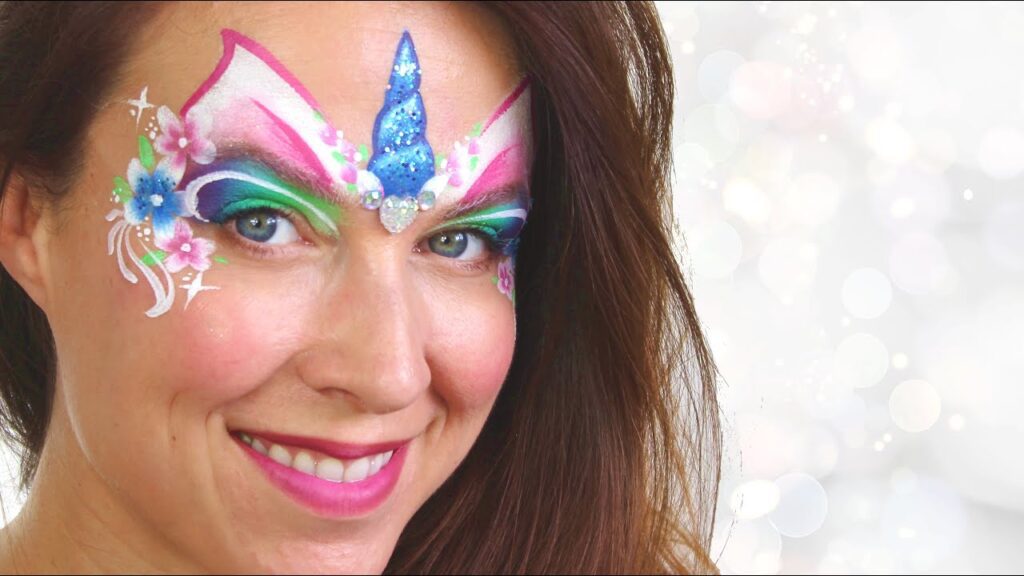
This image is property of i.ytimg.com.
